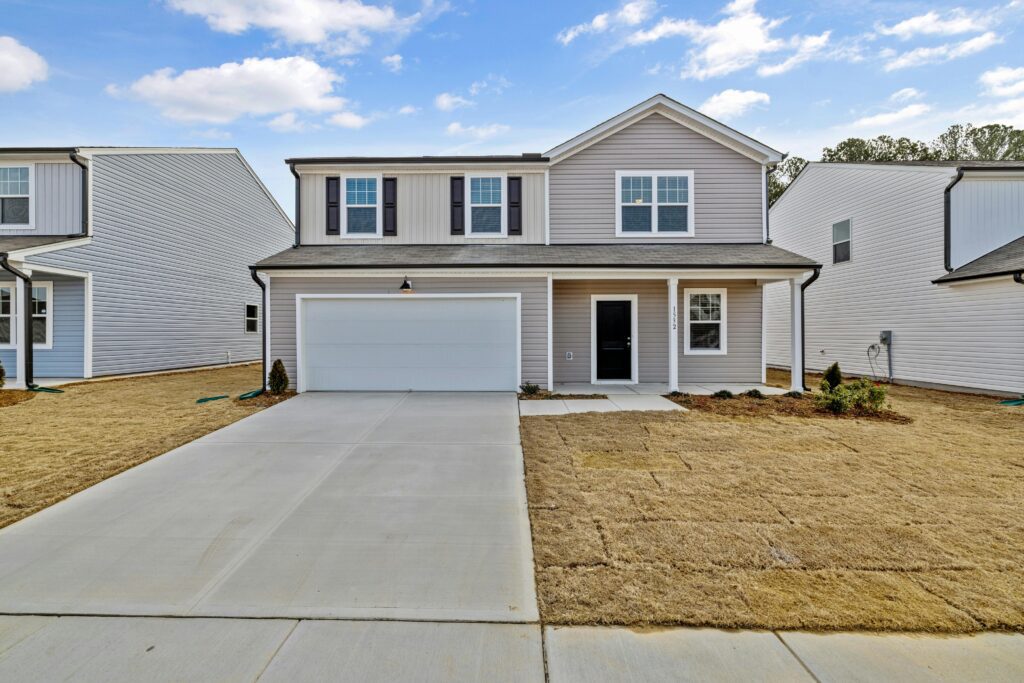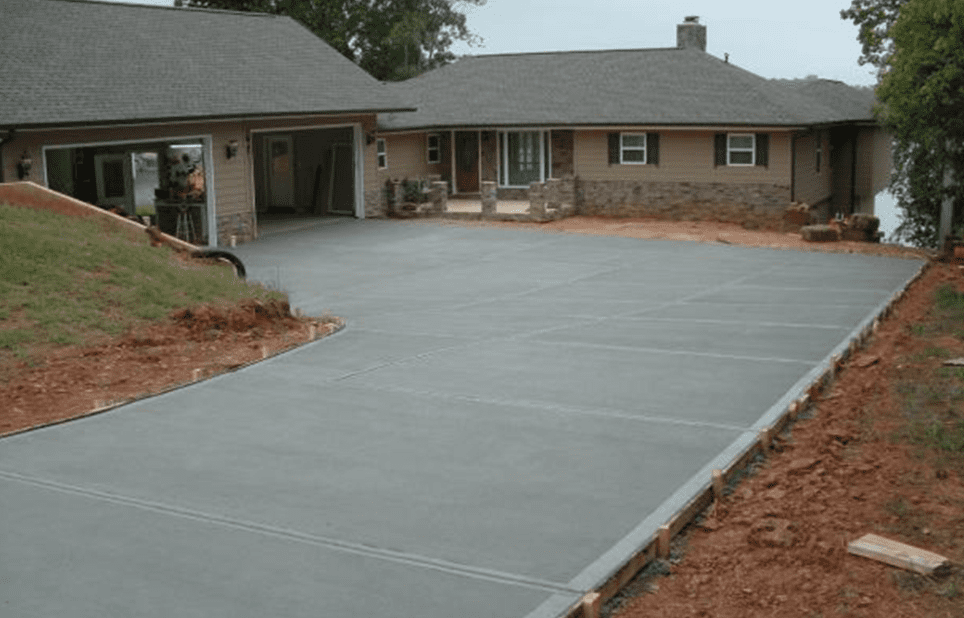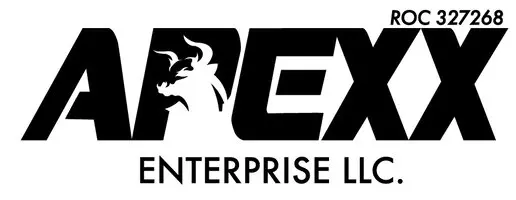How Much Does a Concrete Sidewalk Cost?
Call us at (520) 301-0316

A walkway made from a concrete mix might cost 3.3$ per square foot, and the range is from 1.4$ per square foot to $6.38 per square foot.
The total cost depends on the thickness of the concrete, the shape of the sidewalk, and the type of finish. The variety of the sidewalks ranges from a mere concrete slab to a hardscape with alluring features.
You can enhance your concrete sidewalk by adding flower beds and outdoor landscape lighting. These projects are extra costs, which we’ll cover in our concrete walkway pricing guide.
How Much are We Paying for a Concrete Sidewalk?
The average homeowner pays $8.63 per square foot to install concrete sidewalks. Not all concrete sidewalks are the same. The price ranges between $5.89 per square foot and $12 per sq. foot, depending on the project.
Your sidewalk may fall within or outside the normal range in some cases. The size of the sidewalk, the grade of concrete, and whether or not it is reinforced can all affect the total costs.
Cost Estimator for Size
Concrete professionals usually charge per square foot for labor and material costs. The more square footage your project has, the higher your project’s cost.
Most concrete sidewalks cost between $5.89 per square foot and $12 per sq. foot.
| SIZE (sq ft) | AVERAGE COUNT ($8.63 per sq. ft.) | TYPICAL RANG ($5.89 to 12 per sq ft). |
| 50 | $431.50 | From $294.50 up to $600 |
| 100 | $863 | From $589 to $1200 |
| 200 | $1,726 | From $1,178 up to $2,400 |
| 300 | $2,589 | From $1,767 up to $3,600 |
| 400 | $3,452 | From $2,356 up to $4,800 |
Other factors that affect cost
The size of your sidewalk is a major factor in the cost, but this is not the only thing that affects costs. The bill will be affected by the sidewalk’s shape, thickness, and grade.
- Thickness: The thicker the sidewalk is, the more materials and labor you will need to pay.
- Shape: A sidewalk with straight edges is an easy project. However, a sidewalk that has twists and curves requires more work.
- Type Finish: A polished or stamped finish on your concrete will cost you more.
- Grades of Concrete: Some mixtures of concrete are stronger and longer-lasting than others. This results in higher costs.
- Land preparation: You have to install your sidewalks on flat land. You’ll have to pay more for land preparation if the terrain is sloping or bumpy.
- Accessibility Installers will likely increase their labor rate if the site is difficult for installers to reach.
- Reinforcements Adding rebar to a concrete sidewalk or adding wire mesh will add extra cost.
- Concrete removal: Are you replacing an existing sidewalk? Before you pour any new concrete, you’ll need to remove the old concrete.
Thickness
The more thickness there is in concrete, the stronger it will be. The recommended thickness for concrete sidewalks is 4 inches. If you need to make your sidewalk thicker, you’ll need to pay extra for materials and labor.
Shape
Placing a multi-curve sidewalk is more complex compared to installing a straight sidewalk and thus may be costlier. It is difficult to build a frame that will capture the desired shape of the sidewalk.
Type of Finish
You’ll have to pay more for the finishing touches if you want to give your sidewalk a beautiful color or shine. Concrete finishes include:
- Polished A professional grinds concrete to remove imperfections and create an impressive sheen. The cost of polishing concrete varies between 3 and $30 per square foot, depending on its imperfections and desired sheen.
- Staining Concrete: Staining is the process of changing the color of concrete. Staining concrete costs between 3.40 and 25 per square foot.
- Stamped concrete: Stamping occurs while the concrete is still damp from a pour. Stamped concrete is a popular option that mimics cobblestone and pavers. It costs between $9 to $25.25 per square foot for the concrete as well as the stamping.
- Epoxy: Epoxy sealer helps prevent cracks in concrete by creating an abrasion-resistant coating. The average cost of epoxy application is between 4.75 and 10.25 dollars per square foot.
Grade of Concrete
Concrete is made up of a combination of sand and cement with water, as well as loose aggregates. Concrete with varying strengths can be produced by mixing different ratios of ingredients.
The minimum strength of concrete (measured in Newtons) is used to determine the grade. The grades help professionals and DIYers to identify the best concrete compositions for their projects.
Concrete grades vary in strength. You can expect to spend more if you choose a more durable concrete grade.
Call us at (520) 301-0316

Preparation of Land
Installing a concrete walkway costs between 5.89 USD and 12 USD per square foot. This range does not include land preparation.
The sidewalk should be installed in a level area. You’ll require a professional to grade the land in case it’s sloped or uneven. Land grading usually costs between 10 and 1 dollar per square foot.
Accessibility
You’ll need to pay a higher labor cost if you plan to pour concrete on your sidewalk in an area that’s difficult to reach. Professionals might need to use wheelbarrows to move the concrete or a pump truck to deliver it to the job site. Everything that makes the work more difficult impacts labor. This includes accessibility to the site.
Reinforcements
The majority of sidewalks do not have rebar or mesh reinforcement. These reinforcements are usually installed in concrete slabs that will be heavily used, such as a concrete driveway.
Reinforcements increase the strength and durability of concrete. Reinforced concrete requires less maintenance than concrete without rebar or wire mesh.
You will pay $0.35 USD per square foot if you decide to install rebar on your sidewalk.
Concrete Removal
You will need to remove any concrete that is present at the location where you want to pour your new sidewalk. The average homeowner pays between 2 and 6 dollars per square foot to remove concrete.
Extra Services
Want to make the new concrete pathway stand out in your landscape? It will look beautiful with flowerbeds and decorative mulch. Outdoor landscape lighting can bring out its details.
Here are a few projects that can improve the curb appeal of your sidewalk.
- Landscaping: Increase your sidewalk’s beauty with surrounding colors and textures.
- Retaining wall: Adding a retaining wall alongside your sidewalk can be an attractive hardscape project for sloped terrain.
- Concrete patio: Bridge your concrete sidewalk with a concrete terrace.
- Outdoor Lighting: Outdoor lighting provides the ability to walk safely down your sidewalks during the evening hours.
Landscaping
Landscape your concrete sidewalk to make a lovely pathway. There are many ways to decorate your sidewalk borders. Use border ideas such as river rocks and boxwoods. You may also employ textured mulches and flowerbeds.
The price of professional flower bed installation ranges from $650 to $3,000 for the average homeowner, depending on the extent of the job. Mulching ranges from $ 37 to $113 per cubic yard for the mulch and the professional installation.
Retaining Wall
Retaining Walls can add many benefits to a landscape and look stunning along a walkway. These hardscapes stabilize sloping ground, inhibit flooding, and restrict erosion. The installation of retaining walls can cost between $4,000 and $8,711.
Concrete Patio
Patios can be made from a concrete sidewalk. Patios are an excellent method of introducing fun and entertainment into the backyard. They can be utilized as a space for a hot tub or firepit. Pouring a concrete patio costs between 4.40 and 16 per square foot.
Landscape Lighting
Landscape lights can highlight the details of your polished or stamped sidewalk at night. The charm of your walkway doesn’t have to disappear when the sun sets.
Landscape lighting enhances safety. Landscape lighting is a wonderful method for monitoring your footsteps or observing whether or not there are animals roaming about during the evening.
Installation prices go from $188 to $325 per light. The cost of installation includes both the labor and the actual light.
Cost of Concrete Sidewalks in the U.S.
The prices in this guide are based on national averages. Prices may vary depending on your location due to the accessibility of concrete and how long delivery trucks have to drive. This guide can be used to estimate average costs, but local prices may differ.
DIY Concrete Sidewalk
Concrete pouring might be tricky if you have no experience. Pouring concrete is a slow and strenuous process that takes patience.
When you do it yourself without planning and doing it correctly, it might turn out to be a costly mistake or even lead to injury. Though paying for a professional might be expensive, DIY errors are more expensive to rectify.
This is what you should be prepared to experience if you choose to pour concrete yourself.
- Locate a location for your sidewalk.
- Clear your land wherever you want to install a sidewalk. You can remove grass, shrubs, and rocks, as well as old concrete, to expose the soil.
- Tamp down the soil. This soil is the subgrade for the concrete. The soil will shift under the concrete if it is not compacted and tamped. This compromises the strength and structure of the sidewalk.
- Spread and compact the subbase, which is located above the soil subgrade. Gravel, a subbase material that is commonly used, is one of the most common.
- Build a wooden frame to outline the shape of your sidewalk. The frame is a container in which concrete will be poured.
- Install the wire mesh or install rebar. This step is optional as not every sidewalk requires reinforcement.
- Mix your concrete mixture using a shovel and wheelbarrow. Wear a mask, safety glasses, rubber gloves and boots, long pants, and a long-sleeved shirt.
- Pour concrete into the wooden frame. Spread the mixture with rakes and shovels.
- Smooth out and level the wet concrete with a screeding device.
- Use a bullfloat to run across the concrete surface. The bull float will allow the cream-free aggregate to rise and the floating aggregates to fall.
- Use a concrete edger to edge the sides of the concrete. The edger will make the edges more precise and less prone to cracking.
- Use a groover to make joints every 5-6 feet. This prevents the concrete from cracking.
- Sweep the top of the concrete slab using a broom to provide traction. The surface can be slippery when wet if not swept.
- Seal the concrete to help it cure.
For a concrete pricing guide, contact Apexx Enterprise LLC for more information.
